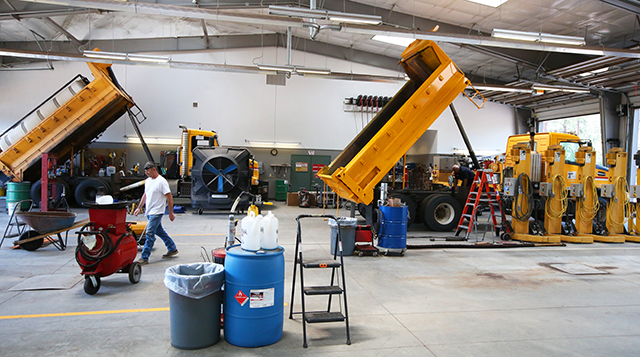Janet Stevens column: Old cat finds a new home
Published 12:00 am Friday, August 3, 2018

- Dinah makes her presence known. (Janet Stevens/The Bulletin)
My daughter Mary and I have added a new member to our household. Her name is Dinah.
She’s not a family member, at least not officially. She’s a cat from the Brightside Animal Center in Redmond, and I’m her foster host. She came home with us about four months ago, when I finally decided I can’t live without a cat around the house. Her predecessor, Chuck, died in mid-January.
Trending
Dinah’s no kitten. The shelter listed her age at more than 20 years old, and while I agree that she’s aging, I’m not sure she’s as old as that. True, she has thyroid problems, a common ailment in old cats, but her kidneys seem to be functioning well.
Chronic kidney failure is a leading cause of death in aged cats, in my limited experience. It can be treated, if both owner and cat are willing, by giving the cat fluids under the skin, and while three of my last four cats tolerated the process well, that wouldn’t have been the case with Chuck.
Dinah’s vision and hearing are also still good, and she doesn’t seem to have arthritis. She’s more than willing to jump onto or off the bed each day. Her appetite is good.
In fact, her appetite is so good that when she’s lying down, she looks like a pillow. I have her on a diet, and I think she’s losing weight, but slowly. A medium-sized cat needs about 210 calories per day, and, with help from my veterinarian, I’m feeding her about 200 calories daily. We have a way to go.
As is often the case with animals from a shelter, I don’t know much about Dinah’s past. I believe she had been owned by a single family for years, and when they were unable to care for her any longer, she came to Brightside, a high-save shelter that places more than 95 percent of the cats it takes in into homes.
She’s a funny old gal. She’s a calico — orange, black and white — and true to the folklore about calico and tortoiseshell cats, she can be downright temperamental and feisty, so much so that she’s earned a not very polite nickname at my house. She hisses when she’s upset, and she upsets easily.
Trending
Calico, by the way, is Dinah’s color, not her breed. As with most cats I’ve had, she’s a good old American cat, heritage unknown. Calicos and tortoiseshells (calicos without the white) are nearly always females. It apparently takes two X chromosomes to create calicos and torties, and while males of those colors are born occasionally, they’re almost always sterile.
It’s taken Dinah time to adjust to life at our house. She finally came out from behind the chair in my presence when she’d been home for days, and of course the first thing she met was my poodle, Zeppo. It wasn’t a happy occasion.
Now, however, things seem to have settled down. She’s moved from the chair to the bed in my room, and she comes downstairs to remind me that it’s dinnertime or just to hang out. Unlike any other cat I’ve ever had, she’s perfectly willing to roll over and let me stroke her stomach, making biscuits in the air while I do so. She’s not shy about asking for attention, and she has one of the loudest purrs I’ve ever heard. I guess that offsets her “speaking” voice, which, unlike the purr, is generally nearly silent.
What she won’t do is get on my lap. The folks at Brightside had said she didn’t like to sit on laps, but deep down I thought that would change as she acclimated. It hasn’t. I may try bribing her, but I suspect her dislike of laps is stronger than her love of kitty treats. We’ll see.
I don’t know how long Dinah will live, but she’ll stay with me for the duration. I chose an older cat intentionally — the thought of an old animal dying in a shelter really bothers me. Meanwhile, we’ve each agreed that the other is OK, or even better than OK. For me, that’s the way it should be with a cat.
— Janet Stevens is deputy editor of The Bulletin. Contact: 541-617-7821, jstevens@bendbulletin.com








